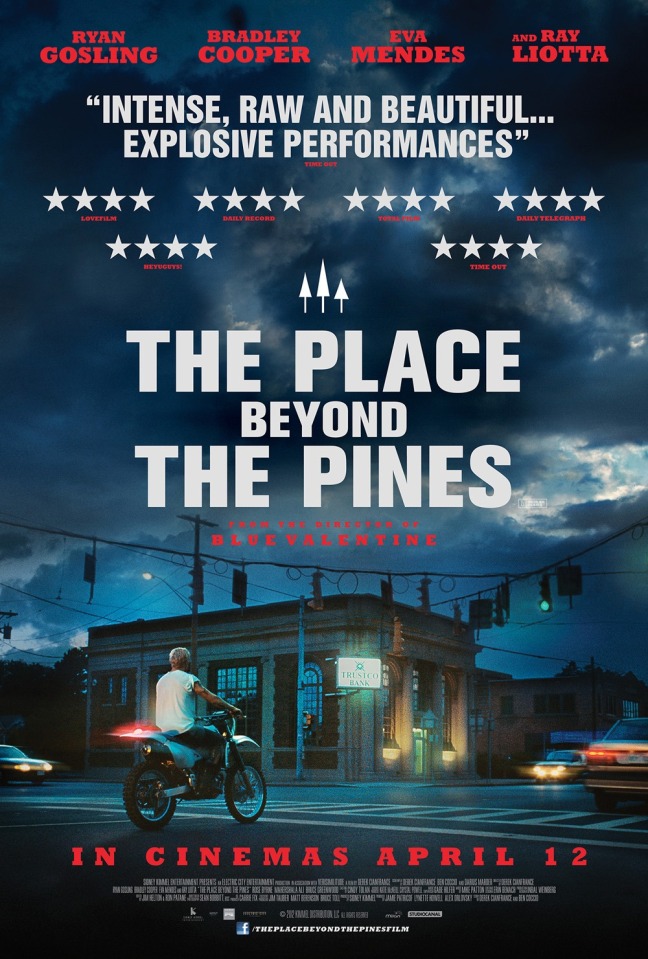
Pine Fresh
Director Derek Cianfrance has a fascination with fractured relationships, and boy does he know how to drive them home. In his debut film “Brother Tied” he examined a splintered sibling relationship, with “Blue Valentine” he explored the implosion of a marriage, and with “The Place Beyond the Pines” he studies the legacy and fallout of choices made by fathers and sons.
The film tells its story as a triptych. The first part follows Luke (Ryan Gosling, Blue Valentine, Drive, ), a daredevil biker who’s going nowhere but the next stop on his performance route, until he receives a visit from an old flame, Romina (Eva Mendes, The Other Guys) in Schenectady, New York. When he learns that since his last tour in town she gave birth to his son, he decides to stick around and help her any way he can — even if that means robbing banks to provide for his son.
During one of his heists, his path suddenly and violently meets that of rookie cop Avery Cross (Bradley Cooper, Silver Linings Playbook, The Hangover), and the narrative switches to Avery’s life for the next section of the movie. The film follows the echoes and consequences of Avery and Luke’s brief meeting, and how their legacies are carried down to their sons in the third act.
The whole film hinges on the concept of the ripple effect — following each character’s actions far beyond the moment and into the lives of those around them — almost to a fault. Each new chapter feels a bit more weighted by the time commitment and ambition of the movie, which comes in at a whopping two hours and 20 minutes.
“The Place Beyond the Pines” is certainly more overtly ambitious than Cianfrance’s previous works, and it doesn’t carry quite the subtle emotional punch that “Blue Valentine” does. The characters, the plot points, and the overwhelming emotion will be off-putting to those who don’t care to wade through all the sentiment.
But there’s something evocative about the stories Cianfrance tells in “The Place Beyond the Pines.” Cianfrance’s style is less about artistic control of his films than about facilitating honest character work, which the movie does gracefully by using both his characters and the location of Schenectady to give the film heart. Cianfrance circles back to events, actions, and people, which makes “The Place Beyond the Pines” a pure but poignant drama.
By far the standout performance of the film is Gosling’s Luke, whose presence haunts the screen even when he’s not there. His work in the film is more than a pretty face and a nice set of abs; it’s a body mural of tattoos and quiet anguish. It’s the kind of faceted and dimensional work that Gosling does so well.
Gosling’s subdued nature reflects the understated duality present in Cianfrance’s story: It simultaneously feels harrowingly true and ambitiously melodramatic. Although the questions it asks may seem a bit heavy for the story, they’ll stay with you long after you leave “The Place Beyond the Pines.”
The verdict: Though long and a bit ambitious compared to his previous work, Cianfrance’s latest film is an evocative exploration of complex relationships.
